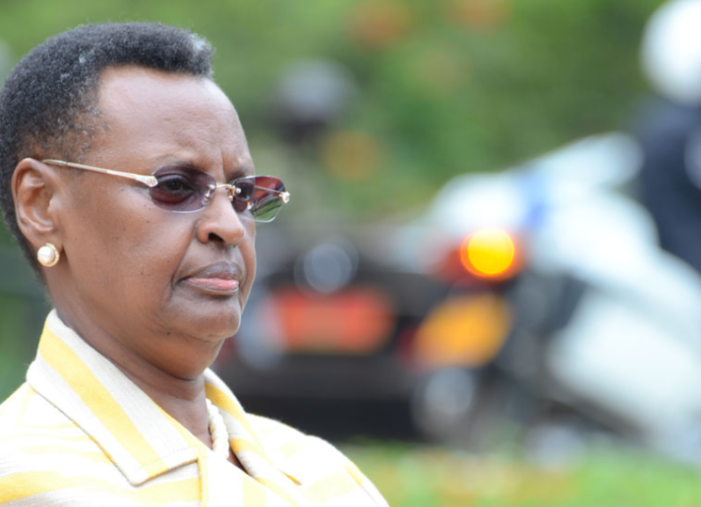The Chairperson of Education Service Commission Reverend Professor Doctor Samuel Luboga Abimelech
Many government secondary schools and tertiary institutions especially in rural areas are grappling with staffing gaps as many reportedly operate with only five teachers on the government payroll.
The glaring staffing gap is one of the findings made by the Education Service Commission- ESC from their recently concluded national wide teacher validation exercise that was carried out in all post-primary institutions including; secondary schools, technical and vocational institutions, farm schools, health training schools, and teacher colleges.
Although the commission’s report has not been made public, Rev. Prof. Samuel Abimelech Luboga, ESC chairperson has given a sneak peek into the report. He observes the existing staffing gap stands at 42 percent, which accounts for 29,000 vacant teaching positions in post-primary institutions.
The chairperson made the remarks on Wednesday afternoon while speaking to our reporter on the sidelines of the swearing-in ceremony for the members of the commission which was held at the High Court in Kampala.
Rev. Prof. Luboga notes that the problem is particularly acute in secondary schools, with science subjects much affected. He mentioned that they visited several schools and discovered that they only had five teachers working there.
Staffing gaps are identified at the school level based on the recommended teaching load and the subjects offered by the school. For each subject, authorities compare the total number of hours of class to be received by learners based on their level and subject specialization, with the total number of hours of teaching available based on the existing teaching staff and their appropriate workload.
Dr. Asuman Lukwago, the secretary to the commission, says that unlike in primary schools where teachers can handle all subjects, in post-primary schools’ teachers or instructors are post to teach specific subjects which means that several public secondary schools and tertiary institutions do have teachers for several subjects.
“There is a huge problem in many schools. Imagine a school operating without teachers for several subjects. How do students learn these subjects,” Lukwago stated before he hastened to add that even schools that had hit their staff ceilings are also not well-off given the huge teacher-student ratio recorded.
The rural-urban divide in the education sector is also reportedly imminent when it comes to staffing levels given the fact that teachers are not deployed in sufficient numbers to some rural and hard-to-reach schools across the districts.
Available records indicate that the government last updated the staff ceiling equipment for the institutions in question in 1997. At that time, each subject was allocated one teacher. However, Rev. Prof. Luboga says as the student enrollment grows, this number is currently low but what worries most is that many schools don’t even meet it.
He argues that apart from filling the existing staffing gaps, there is a need to raise the staff ceiling to a minimum of at least 31 teachers per school, and the maximum be determined by the teacher-student ratio.
To him, the needed teachers are already available in the country but there is a need to plan on how they can be recruited. “Recently we put out an advert. We had 5000 vacancies but 32,000 applicants turned up. this availability of the teachers is not the problem but there are other factors such as wage bills that need to be worked on for our schools to be fully staffed,” he added.
With the glaring staffing gaps, many schools are operating on privately contracted teachers under the PTA arrangement. This finding poke holes in the government’s desire to ban the payment of PTA fees as a question of who will teach learners when schools are not able to raise the salary of private teachers who will teach the learners?
The situation in new seed schools
Away from ‘old schools’, the majority of seed secondary schools that were operationalized in this Academic Year have remained operating for two terms without teachers as they wait for the government to post staff members.
Sometime in 2020, Sam Kuloba, the Commissioner of Secondary Education noted that all the newly constructed schools were to receive teachers by January 2021. However, Rev. Prof. Luboga notes that the staffing problems in these schools are unique.
He states that at first the government had decided to appoint teachers directly from schools but the process was abused and they had to abandon it. Rev. Prof. Luboga adds that they have now resorted open recruitment process which is a bit slower thus the delay to post teachers in over 117 schools across the country.
He however adds that some schools already received some staff members.
1000 ghosts found in schools
Besides staffing gaps, the commission also found ghost teachers, and masqueraders, who are paid as teachers and educators but operate on fake appointment letters.
Violet Froelich Kajubiri, who was sworn for another term of office as deputy chairperson of the commission told our reporter that the number of teachers who had been irregularly put on the payroll is estimated above 1000.
“This was the first national-wide validation exercise and the figure of the so-called ghost teachers is so big. It’s above 1000. for years, the specific source of the forgeries has been unknown. We now know how they bit the system, particulars will be shared soon when the report is made public,” Kajubiri noted.
Kajubiri, who happens to be President Museveni’s sister, adds that there is a need for different government agencies, including security, to work hand in hand with the commission if the vice is to be completely stopped.
According to available data, the government spends Shs 7.3 billion per year on salaries paid to unscrupulous teachers on the payroll. This amount of money can be used to build three fully-equipped seed schools (each at Shs 2.3 billion).
-URN






Help teachers in government schools not on payroll, be given jobs directly, uptitude tests are just mockery